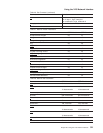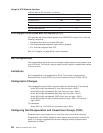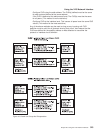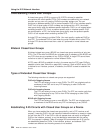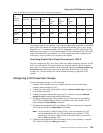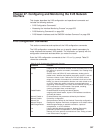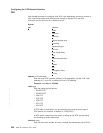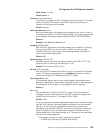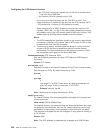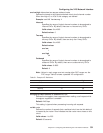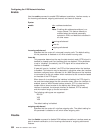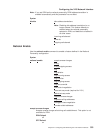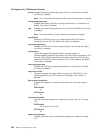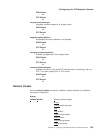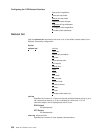Valid Values: 1to239
Default Value: 4
clocking
external
or
internal
To connect to a modem or DSU, configure clocking as external. To connect
directly to another DTE device, use a DCE cable, set the clocking to
internal, and configure the line speed.
Default: external
default-window-size
value
Sets the window size for the packet level assigned by the router if there is
no window-size facility in the Call-Request packet. The range is determined
by the National Personality packet modulus (PACKET-EXT-SEQ-MODE).
Default: 2
Example: set default-window-size 3
encoding
NRZ
or
NRZI
Sets the HDLC transmission encoding scheme for the interface. Encoding
may be set for NRZ (non-return to zero) or NRZI (non-return to zero
inverted). NRZ is the more widely used encoding scheme while NRZI is
used in some IBM configurations.
Default: NRZ
equipment-type
DCE
or
DTE
Specifies whether the frame and packet levels act as DCE or DTE. This
command has no relation to the cable type in use.
Default: DTE (must be DTE for X.31)
htf addr
x.25-node-addr
Sets the local DTE address when DDN is used. It converts the IP address
to an X.121 address as opposed to the set address command, which is
used to set the local DTE address when CCITT is used.
inter-frame-delay
value
This parameter defines the minimum delay between transmitted frames.
Setting this parameter is useful when interfacing directly to older equipment.
This parameter is the amount of time between frames in seconds.
Default: 0
mtu
value
Sets the Maximum Transmit Unit (MTU) in bytes. This is the maximum
message size that will be delivered to the X.25 interface to package and
transmit over the serial line. The range is 576 to 16384.
Default: 1500
If you are encountering packet reassembly timeouts when transferring data
over the X.25 interface, you should determine what the minimum packet
size is for all LAN or serial interfaces that lead to the end-point, then
calculate a more suitable X.25 MTU. You should not directly consider the
actual X.25 packet size in this calculation because X.25 tends to use a
smaller packet size. X.25 usually sends up to 7 packets at one time before
waiting for an acknowledgment.
For example, consider a network topology that includes:
– A Token-Ring LAN having a packet size of 4000
Configuring the X.25 Network Interface
Chapter 27. Configuring and Monitoring the X.25 Network Interface 329



